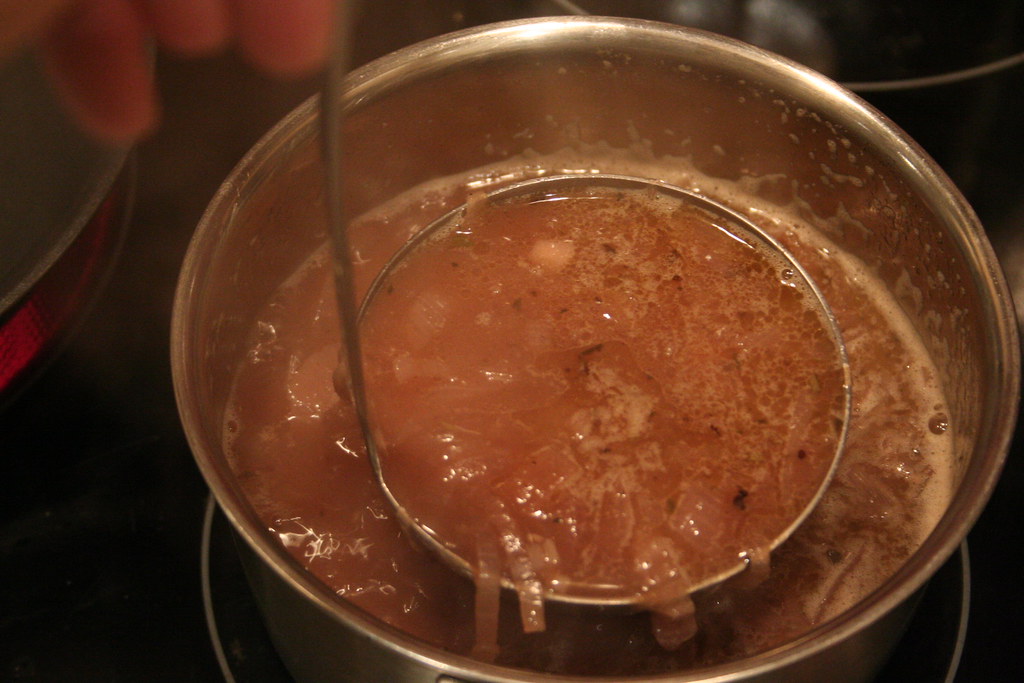
Introduction:
Craving a taste of traditional French cuisine? Look no further than the mouthwatering “French Coq au Vin Recipe.” This classic dish combines tender chicken, rich red wine, and fragrant herbs for a tantalizing flavor experience that will transport your taste buds to the streets of Paris. Join me as we dive into the history, preparation, and deliciousness of this iconic recipe.
Origin and History Of This Recipe:
The origins of Coq au Vin date back to the French countryside, where farmers would simmer tough rooster meat in red wine to tenderize it. Over time, this rustic dish evolved into the beloved Coq au Vin we know today. This hearty stew became popular in French bistros and homes, celebrated for its robust flavors and comforting warmth. Today, it remains a staple of French cuisine, loved by foodies around the world.
Things To Expect In This Post Article:
In this article, we will explore the rich history and origins of the French Coq au Vin Recipe, provide a detailed list of ingredients, offer step-by-step preparation instructions, share personal insights and tips for success, and delve into the nutritional benefits and potential health considerations of this dish.
Ingredients List:
- 1 whole chicken (cut into pieces)
- 1 bottle of red wine
- 8 oz. bacon, sliced
- 1 onion, chopped
- 2 cloves of garlic, minced
- 1 cup chicken broth
- 2 tbsp. tomato paste
- 2 tbsp. all-purpose flour
- Fresh thyme and parsley
- Salt and pepper to taste
Preparation Steps:
- In a large Dutch oven or heavy-bottomed pot, cook the bacon until crispy. Remove and set aside.
- Season the chicken pieces with salt and pepper, then brown them in the bacon fat. Remove and set aside.
- Sauté the onion and garlic until fragrant, then stir in the flour and tomato paste to make a roux.
- Slowly pour in the red wine and chicken broth, stirring to combine.
- Add the chicken back to the pot along with the bacon, thyme, and parsley. Cover and simmer for 1-2 hours until the chicken is tender.
- Serve hot over mashed potatoes or crusty bread.
Cooking Time & Servings:
This recipe takes approximately 2 hours to prepare and serves 4-6 hungry guests.
Personal Touch:
Growing up, my grandmother would make Coq au Vin for special occasions, filling the house with the enticing aroma of simmering chicken and wine. This dish holds a special place in my heart, reminding me of cherished family gatherings and delicious meals shared with loved ones.
Nutritional Information:
Packed with protein, vitamins, and antioxidants, Coq au Vin is a nutrient-rich dish that is both delicious and satisfying. Each serving provides a hearty dose of essential nutrients to fuel your body and keep you feeling your best.
Health Conditions And People To Avoid This:
Those with alcohol sensitivities, poultry allergies, or dietary restrictions should exercise caution when consuming Coq au Vin. Additionally, individuals with certain health conditions such as gout, high blood pressure, or liver disease may need to limit their intake of this rich and indulgent dish.
Nutrition and Benefits To The Body:
The red wine in Coq au Vin is rich in antioxidants like resveratrol, which may help reduce inflammation and lower the risk of heart disease. Chicken provides lean protein, while herbs and vegetables offer essential vitamins and minerals for overall health and well-being.
Disadvantages:
While Coq au Vin is a delicious and satisfying meal, it is important to enjoy it in moderation. Excessive consumption of red wine or fatty meats can contribute to weight gain, high cholesterol, and other health issues. Eating this dish occasionally as part of a balanced diet is the key to enjoying its flavors without overindulging.
Tips and Tricks:
For a healthy twist on Coq au Vin, try using skinless chicken breasts or thighs and reducing the amount of bacon in the recipe. You can also add extra vegetables like mushrooms, carrots, and pearl onions for added flavor and nutrients. Experiment with different herbs and spices to customize the dish to your taste.
Equipment Needed:
To make Coq au Vin, you will need a Dutch oven or heavy-bottomed pot, a sharp knife for cutting the chicken, a cutting board, measuring cups and spoons, and a stirring utensil. These tools will help you prepare the dish efficiently and ensure delicious results.
Variations or Substitutions:
If you prefer a vegetarian version of Coq au Vin, you can substitute mushrooms or tofu for the chicken and vegetable broth for the chicken broth. For a gluten-free option, use a gluten-free flour blend or cornstarch to thicken the sauce. Feel free to get creative and experiment with different ingredients to suit your dietary preferences.
Serving Suggestions:
Coq au Vin is traditionally served over mashed potatoes, rice, or crusty bread to soak up the savory sauce. You can also pair it with a side salad, steamed vegetables, or a glass of red wine for a complete and satisfying meal. Garnish with fresh herbs for a touch of freshness and color.
Storage and Reheating Instructions:
Leftover Coq au Vin can be stored in an airtight container in the refrigerator for up to 3 days. To reheat, simply transfer the dish to a pot and warm over low heat until hot and bubbly. Add a splash of chicken broth or wine if needed to revive the flavors and prevent the dish from drying out.
Conclusion:
Experience the magic of French cuisine with the delectable “French Coq au Vin Recipe.” Whether you’re cooking for a special occasion or craving a taste of Paris at home, this classic dish is sure to impress. Don’t hesitate to try your hand at making this delicious and comforting recipe – your taste buds will thank you!
Frequently Asked Questions (FAQs):
Q: Can I use white wine instead of red wine for Coq au Vin?
A: While traditional Coq au Vin calls for red wine, you can experiment with white wine for a lighter flavor profile. Just be sure to adjust the seasonings to complement the wine’s acidity.
Q: Can I make Coq au Vin in a slow cooker?
A: Absolutely! Simply brown the chicken and bacon before transferring everything to the slow cooker. Cook on low for 6-8 hours or on high for 3-4 hours for tender and flavorful results.
Q: What can I serve with Coq au Vin besides mashed potatoes?
A: Coq au Vin pairs well with rice, egg noodles, or crusty bread for soaking up the delicious sauce. You can also serve it with roasted vegetables or a green salad for a complete meal.
Q: Can I freeze Coq au Vin for later?
A: Yes, Coq au Vin freezes well for up to 3 months. Just be sure to thaw it in the refrigerator overnight before reheating on the stovetop or in the microwave.
Q: How can I make Coq au Vin dairy-free?
A: To make Coq au Vin dairy-free, simply omit the butter and cream from the recipe. You can use olive oil or dairy-free butter as a substitute for sautéing the onions and garlic.
Q: Can I use boneless, skinless chicken for Coq au Vin?
A: Yes, boneless, skinless chicken breasts or thighs can be used in Coq au Vin for a leaner option. Just be mindful of the cooking time to prevent the chicken from becoming dry.
Q: Is Coq au Vin a gluten-free dish?
A: Coq au Vin is naturally gluten-free, but be sure to use a gluten-free flour blend or cornstarch as a thickening agent if you have a gluten sensitivity or allergy.
Q: How can I make Coq au Vin healthier?
A: To make Coq au Vin healthier, opt for lean proteins like skinless chicken and reduce the amount of bacon in the recipe. Load up on vegetables and herbs for added nutrients and flavor without skimping on taste.
Q: Can I make Coq au Vin with chicken thighs instead of a whole chicken?
A: Yes, you can use chicken thighs or a combination of chicken pieces in Coq au Vin for a more budget-friendly and convenient option. Just adjust the cooking time as needed for optimal tenderness.
Q: What wine should I use for Coq au Vin?
A: Traditionally, a dry red wine like Burgundy or Pinot Noir is used for Coq au Vin to enhance the flavor of the dish. However, feel free to experiment with your favorite red wine to suit your taste preferences.
Remember to keep your tone friendly and conversational, and make sure the content is informative, engaging, and factually accurate. Use this structure to create a valuable and SEO-optimized recipe post that readers will love and share. Enjoy cooking and savoring this delicious French classic!



















